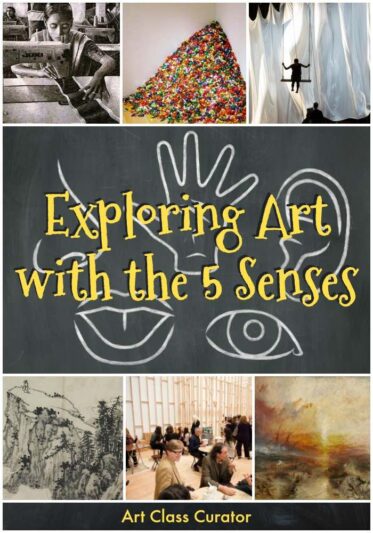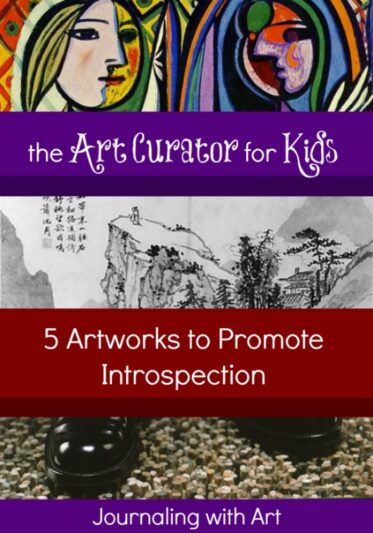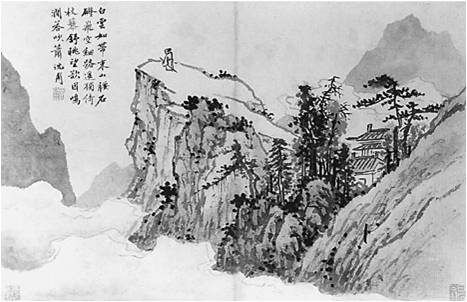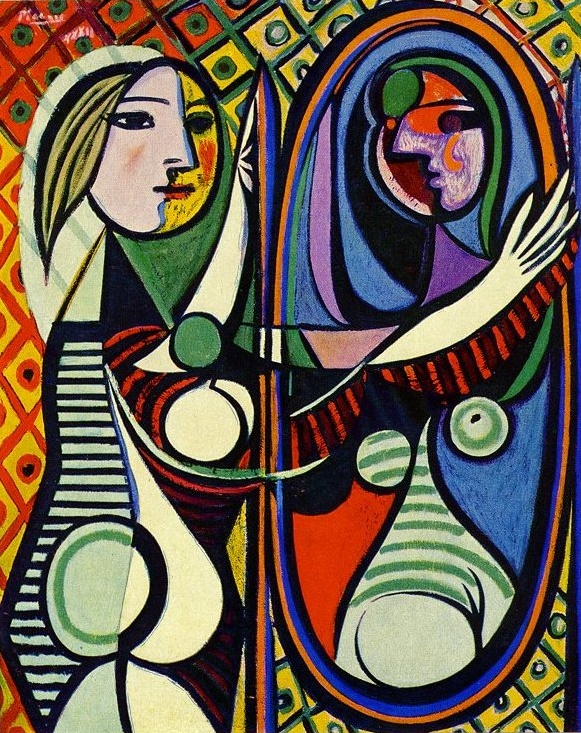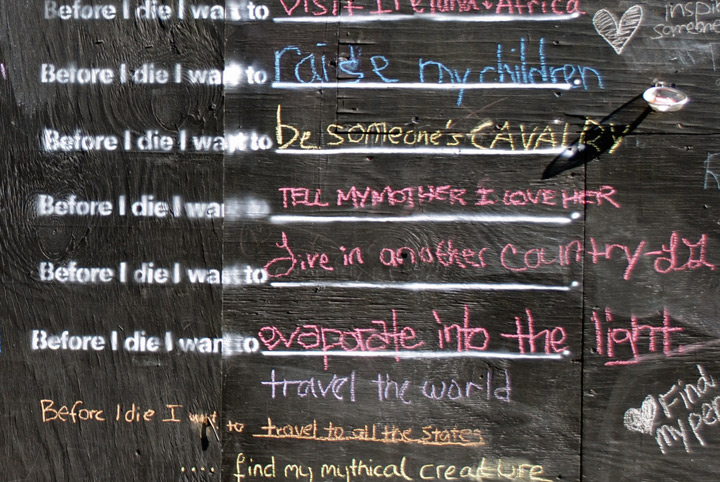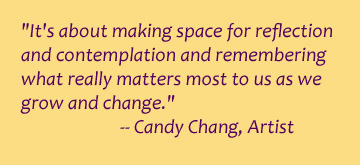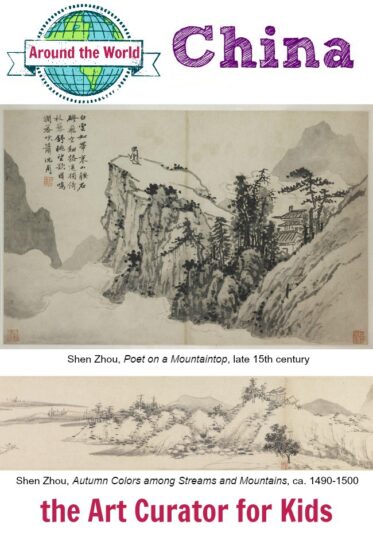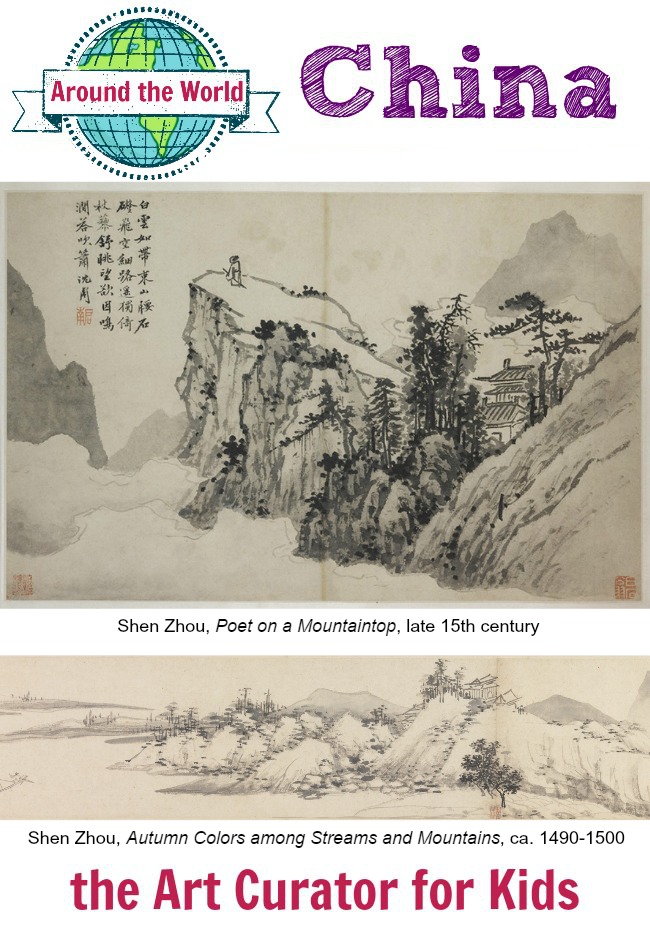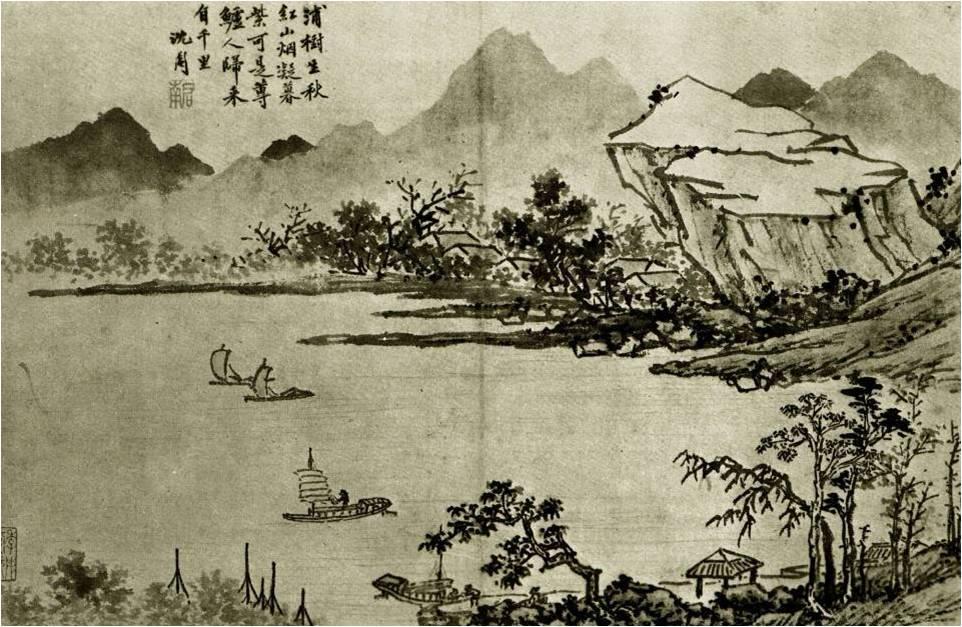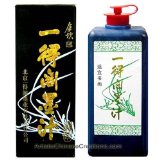Inside: Hone your art senses! These multisensory artworks can be explored through the lens of the five senses. Use this free art worksheet to analyze these artworks with your students.
Have you ever completely lost yourself in a painting? Last year, I was at the Art Institute of Chicago when El Greco’s The Feast in the House of Simon engulfed me. It was one of those times where an artwork grabs me and doesn’t let me go.
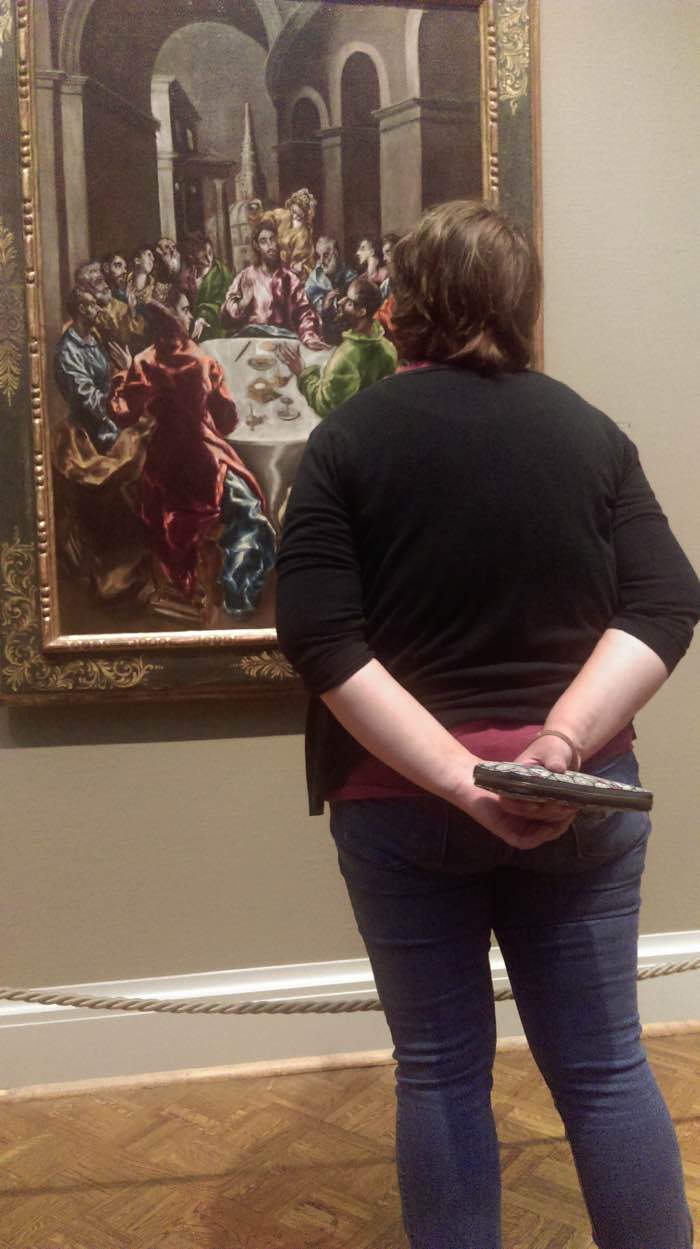
When an artwork captivates me, I like to reflect later on what it was that got me–the color, the emotion, the lines, and the scale. In addition to swimming in El Greco’s unmistakable style, I think it was the overall feeling of this place that drew me in–the sights, the sounds, and the atmosphere.
Art can take us away and help us experience new places. Students can experience this journey to new places and work on their descriptive language skills at the same time through close observation and exploration of a work of art.
I have chosen five artworks that you could use to help transport you and your students to a new place through your art senses–whether it is a landscape to experience or an artwork that uses a multisensory approach.

Develop your Art Senses
Take these artworks, and use the “Exploring Place: The 5 Senses” from my free printable art worksheet bundle. The worksheet has students imagine they have entered the artwork and describe what they might experience through the 5 senses plus a bonus question about how would it feel to be in this place.
Click here to get my free printable art worksheet bundle which includes the exploring art through the five senses worksheet!
Ann Hamilton’s The Event of a Thread
Exploring art through the five senses a natural fit for installation art. The artist’s goal is to create an experience for the “viewer,” and artists usually always address most of the five senses to do this.
In Ann Hamilton’s The Event of a Thread, large swings hang from the tall ceiling of Manhattan’s Park Avenue Armory. The swings are connected to the top of an enormous and billowing white fabric. As people swing, they directly impact the flow of the fabric.
Records play discordant singing and speaking, spotlights shine down on the swing, bells ring, and the voices of viewers echo in the large chamber.
Visit Ann Hamilton’s website for a longer video of the installation without the interviews.
In the middle under the cloth, I knew it would be a really wonderful place to stand–to have the kind of turbulence and the liquidity of the cloth fall around you. But I was totally unprepared for the fact that people would lay down on the floor and stay horizontal for a long, long time. — Ann Hamilton
Ann Hamilton says one family stayed in the space for three hours to experience it.
Felix Gonzalez-Torres’ Untitled (Portrait of Ross in L.A.)
A huge pile of colorfully crinkled, wrapped candy sits in the corner of the museum floor. Visitors are invited to take and eat a piece of candy if they wish.
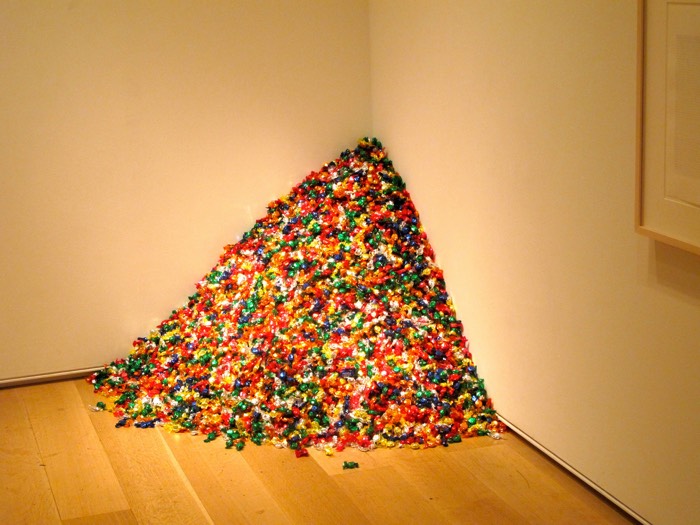
The candy equals the ideal weight of the artist’s partner, Ross, who died of an AIDS-related illness in 1991. As museum-goers take pieces of candy from the installation, it mimics the weight loss that Ross suffered because of his illness. The artist instructed the museum to resupply the candy regularly so that it continually gives life back to Ross.
The taste connection is obvious, but you can also think about the crinkly sound of the candy wrapper, the bright colors, the way it would feel if you were to stick your hand into the pile, and exploring the emotions that come from knowing you were eating away the weight of a sick person.
Extend your discussion further and look at these Instagram posts of the artwork. How does the goofiness of some of the photos fit in with the seriousness of the work?
J.M.W. Turner’s The Slave Ship

This painting has all of the senses covered–the taste of the salty air and water, the smell of blood and fish, the sound of the roaring storm, the feel of the sharp waves, the sight of the beautiful sunset mirrored in the red blood in the water. It’s a total powerhouse of a painting.
I use this painting in my color lesson to discuss how artists use color to create mood.
Terese Agnew’s Portrait of a Textile Worker
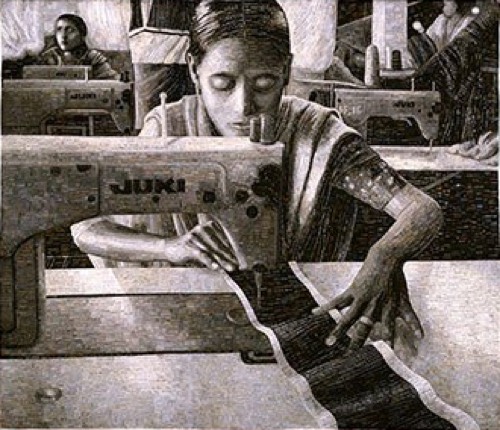
This 8’x9’ artwork is a construction of 30,000 clothing labels stitched together to make a portrait of a textile worker in Bangladesh (original photo taken undercover by Charles Kernaghan, the Director of the National Labor Committee).
The artist created the artwork in response to an interview she heard about “the appalling treatment of these garment at a plant in Nicaragua where the women were forced to work 14 to 16 hours a day 6 and 7 days a week.”
Students can consider the conditions in these factories by looking closely at this artwork and imagining what it must be like to be in that environment. In addition to analyzing the setting of the artwork, students can also connect with the character and her emotions as well. What can they tell about how they would feel in this space based on the emotions of the woman depicted?
This artwork can also be explored through the sense of touch. If we were allowed to touch this artwork, it would connect us with the 30,000 people across the world who had a hand in making these labels and the clothing they were attached to as well as the thousands of women who hand-cut these labels from their clothing.
Rirkrit Tiravanija’s Untitled (Free)
In 1992, Rirkrit Tiravanija created an art experience in the 303 Gallery in New York City. In the exhibit space, he set up a kitchen, cooked rice and Thai curry, and offered it for free for exhibition visitors. 20 years later, the MOMA recreated the exhibit to scale in its own galleries.
Invite students to explore the taste and smell of the food and the sound of the kitchen alongside the sound of the people talking.
You aren’t looking at the art, but are part of it—and are, in fact, making the art as you eat curry and talk with friends or new acquaintances. — Rebecca Stokes
As an extension, use this artwork in a discussion about aesthetics. Is this art? Why or why not?
Shen Zhou’s Poet on a Mountaintop

Of course, I have to include one of my favorite paintings of all time, Shen Zhou’s Poet on a Mountaintop. As a staunch introvert, this is my dream painting. It is perfect for imagining setting–the quiet nature sounds, the vastness of the landscape, and the smell of morning dew, maybe the faint tinkle of the temple sounds in the background.
As you can see, you can use the five sense worksheet with a variety of types of artworks–from installation art to exploring landscapes to connecting with real people.
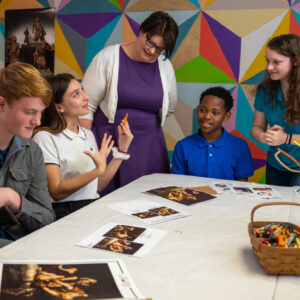
Get the Full Lesson!
This Lesson is in The Curated Connections Library!
Find the full lesson from this post along with hundreds of other art teaching resources and trainings in the Curated Connections Library. Click here for more information about how to join or enter your email below for a free SPARKworks lesson from the membership!
Continue Exploring Art with the Five Senses
Intrigued by the idea of connecting the senses with art? Check out this exhibit from the Tate Gallery that helps visitors explore art through the five senses.

